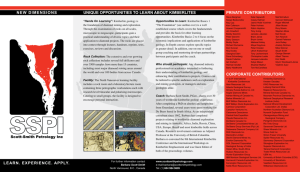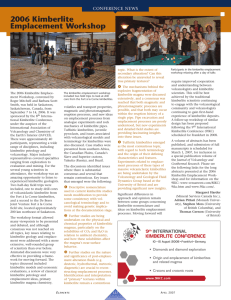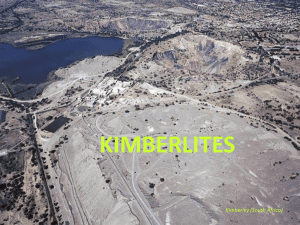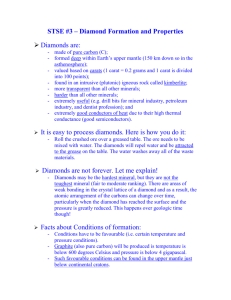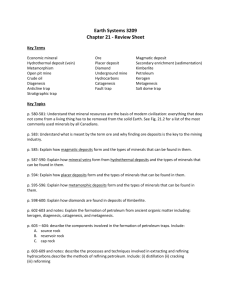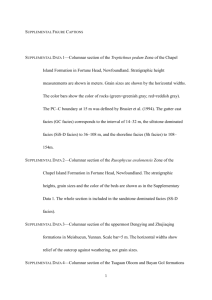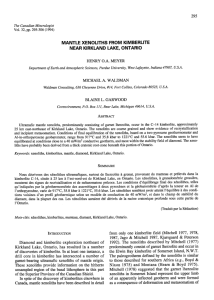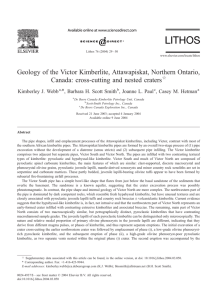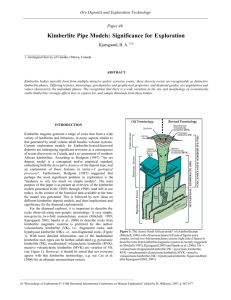The Geology of Micaceous Kimberlite Intrusives, Khutse, Botswana
advertisement
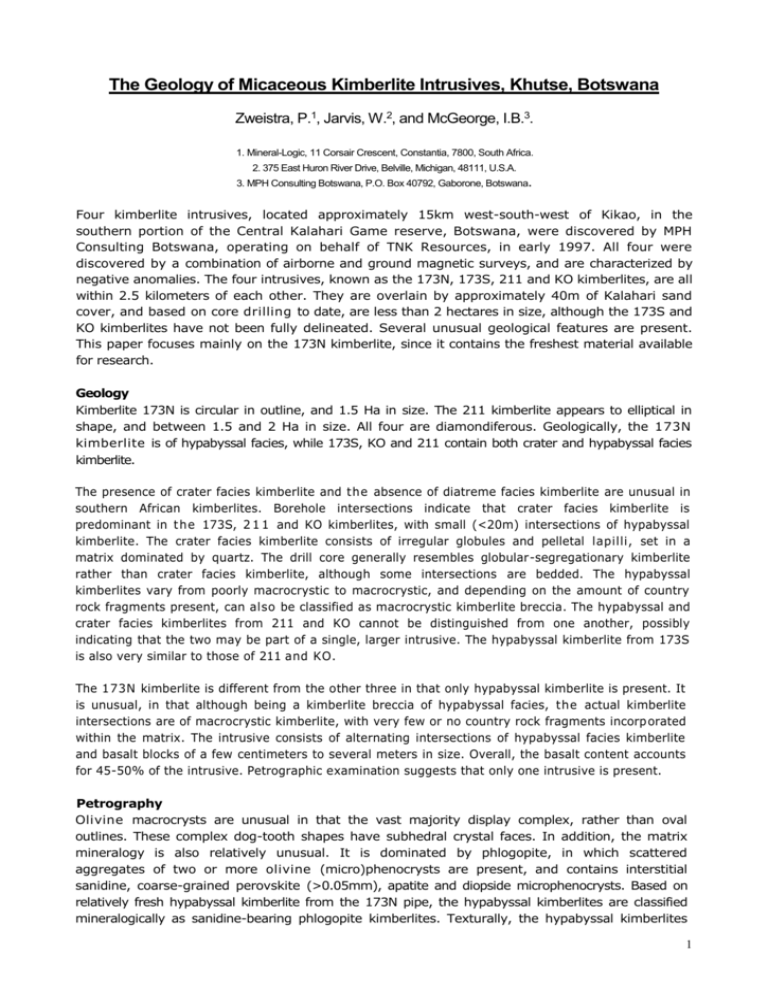
The Geology of Micaceous Kimberlite Intrusives, Khutse, Botswana Zweistra, P.1, Jarvis, W.2, and McGeorge, I.B.3. 1. Mineral-Logic, 11 Corsair Crescent, Constantia, 7800, South Africa. 2. 375 East Huron River Drive, Belville, Michigan, 48111, U.S.A. 3. MPH Consulting Botswana, P.O. Box 40792, Gaborone, Botswana. Four kimberlite intrusives, located approximately 15km west-south-west of Kikao, in the southern portion of the Central Kalahari Game reserve, Botswana, were discovered by MPH Consulting Botswana, operating on behalf of TNK Resources, in early 1997. All four were discovered by a combination of airborne and ground magnetic surveys, and are characterized by negative anomalies. The four intrusives, known as the 173N, 173S, 211 and KO kimberlites, are all within 2.5 kilometers of each other. They are overlain by approximately 40m of Kalahari sand cover, and based on core drilling to date, are less than 2 hectares in size, although the 173S and KO kimberlites have not been fully delineated. Several unusual geological features are present. This paper focuses mainly on the 173N kimberlite, since it contains the freshest material available for research. Geology Kimberlite 173N is circular in outline, and 1.5 Ha in size. The 211 kimberlite appears to elliptical in shape, and between 1.5 and 2 Ha in size. All four are diamondiferous. Geologically, the 173N kimberlite is of hypabyssal facies, while 173S, KO and 211 contain both crater and hypabyssal facies kimberlite. The presence of crater facies kimberlite and the absence of diatreme facies kimberlite are unusual in southern African kimberlites. Borehole intersections indicate that crater facies kimberlite is predominant in t he 173S, 2 1 1 and KO kimberlites, with small (<20m) intersections of hypabyssal kimberlite. The crater facies kimberlite consists of irregular globules and pelletal lapilli, set in a matrix dominated by quartz. The drill core generally resembles globular-segregationary kimberlite rather than crater facies kimberlite, although some intersections are bedded. The hypabyssal kimberlites vary from poorly macrocrystic to macrocrystic, and depending on the amount of country rock fragments present, can also be classified as macrocrystic kimberlite breccia. The hypabyssal and crater facies kimberlites from 211 and KO cannot be distinguished from one another, possibly indicating that the two may be part of a single, larger intrusive. The hypabyssal kimberlite from 173S is also very similar to those of 211 and KO. The 173N kimberlite is different from the other three in that only hypabyssal kimberlite is present. It is unusual, in that although being a kimberlite breccia of hypabyssal facies, the actual kimberlite intersections are of macrocrystic kimberlite, with very few or no country rock fragments incorp orated within the matrix. The intrusive consists of alternating intersections of hypabyssal facies kimberlite and basalt blocks of a few centimeters to several meters in size. Overall, the basalt content accounts for 45-50% of the intrusive. Petrographic examination suggests that only one intrusive is present. Petrography Olivine macrocrysts are unusual in that the vast majority display complex, rather than oval outlines. These complex dog-tooth shapes have subhedral crystal faces. In addition, the matrix mineralogy is also relatively unusual. It is dominated by phlogopite, in which scattered aggregates of two or more olivine (micro)phenocrysts are present, and contains interstitial sanidine, coarse-grained perovskite (>0.05mm), apatite and diopside microphenocrysts. Based on relatively fresh hypabyssal kimberlite from the 173N pipe, the hypabyssal kimberlites are classified mineralogically as sanidine-bearing phlogopite kimberlites. Texturally, the hypabyssal kimberlites 1 classify as poorly macrocrystic to (predominant) macrocrystic kimberlite (±breccias). The crater facies kimberlites consist of irregularly shaped and lesser sub-spherical globules, pellets and pelletal lapilli, set in a matrix dominated by strained, subangular, poorly sorted quartz. The majority classify texturally as sandy, pelletal, pyroclastic kimberlite tuffs of crater facies. Mineralogically, they are altered and cannot be positively classified. However, phlogopite is the predominant matrix phase of the globules / pellets, with some diopside discernable, indicating that they are mineralogically similar to the hypabyssal kimberlites. Matrix Mineral Chemistry Electron microprobe analyses of olivine macrocrysts and phenocrysts and matrix phlogopite, sanidine and diopside, indicate that despite the various unusual features present, the intrusives overlap compositionally with kimberlites but not lamproites. The phlogopite compositions, in particular, are unusual, being characterized by high FeO (>11 wt. %) and low Al2O3 (generally <3wt. %) contents. Indicator Mineral Chemistry All four intrusives are characterized by a heavy mineral suite which includes relatively abundant garnet, scarce chromite and chrome diopside, and very rare ilmenite, the latter from the 211 intrusive, only. Major element indicator mineral compositions reflect a very weak peridotitic diamond signature, with a comparatively strong eclogitic diamond signature. Diamonds Micro diamond analyses of samples from all four intrusives have been undertaken. Positive results from all four intrusives were received. Conclusions Work undertaken on these four intrusives to date indicates that they are small kimberlites. Both crater and hypabyssal facies kimberlite is present Petrography suggests that they are "evolved" kimberlites, possibly related to evolved Group-11 kimberlites. If so, these are the first Group-II kimberlites outside of South .Africa, excluding Dokolowayo in Swaziland. 2
